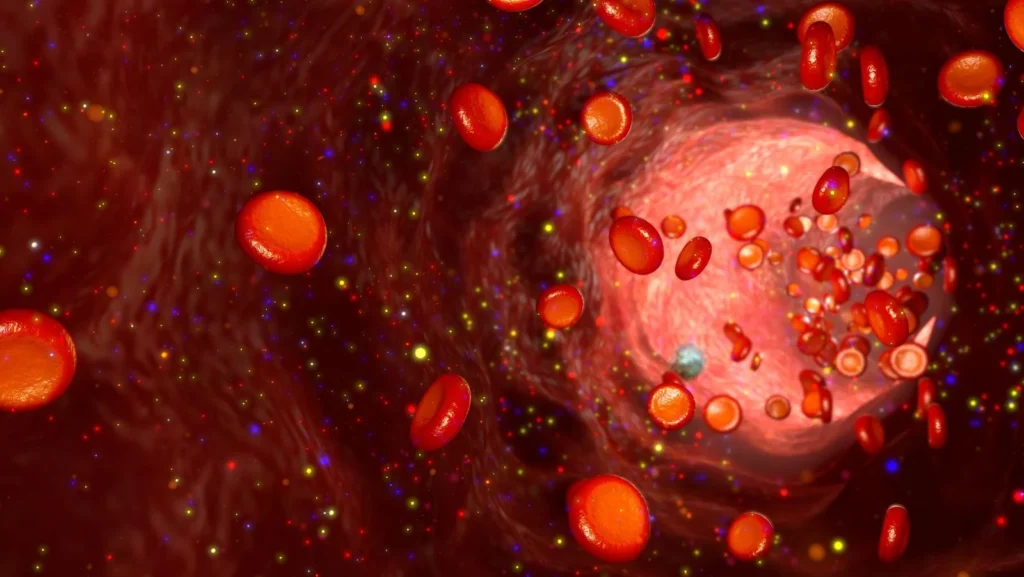
Chronic Lymphocytic-Leukemia

Overview
Chronic lymphocytic leukemia (CLL) is a type of cancer of the blood and bone marrow — the spongy tissue inside bones where blood cells are made.
The term “chronic” in chronic lymphocytic leukemia comes from the fact that this leukemia typically progresses more slowly than other types of leukemia. The term “lymphocytic” in chronic lymphocytic leukemia comes from the cells affected by the disease — a group of white blood cells called lymphocytes, which help your body fight infection.
Chronic lymphocytic leukemia most commonly affects older adults. There are treatments to help control the disease.
Symptoms
Many people with chronic lymphocytic leukemia have no symptoms at first. Signs and symptoms might develop as the cancer progresses. They might include:
- Enlarged, but painless, lymph nodes
- Fatigue
- Fever
- Pain in the upper left portion of the abdomen, which may be caused by an enlarged spleen
- Night sweats
- Weight loss
- Frequent infections
Causes
Doctors aren’t certain what starts the process that causes chronic lymphocytic leukemia. What’s known is that something happens to cause changes (mutations) in the DNA of blood-producing cells. A cell’s DNA contains the instructions that tell the cell what to do. The changes tell the blood cells to produce abnormal, ineffective lymphocytes.
Beyond being ineffective, these abnormal lymphocytes continue to live and multiply when healthy lymphocytes would die. The abnormal lymphocytes accumulate in the blood and certain organs, where they cause complications. They may crowd healthy cells out of the bone marrow and interfere with blood cell production.
Doctors and researchers are working to understand the exact mechanism that causes chronic lymphocytic leukemia.
When to see a doctor
Make an appointment with your doctor if you have any persistent signs and symptoms that worry you.
Risk factors
Factors that may increase the risk of chronic lymphocytic leukemia include:
- Your age. This disease occurs most often in older adults.
- Your race. White people are more likely to develop chronic lymphocytic leukemia than are people of other races.
- Family history of blood and bone marrow cancers. A family history of chronic lymphocytic leukemia or other blood and bone marrow cancers may increase your risk.
- Exposure to chemicals. Certain herbicides and insecticides, including Agent Orange used during the Vietnam War, have been linked to an increased risk of chronic lymphocytic leukemia.
- A condition that causes excess lymphocytes. Monoclonal B-cell lymphocytosis (MBL) causes an increased number of one type of lymphocyte (B cells) in the blood. For a small number of people with MBL, the condition may develop into chronic lymphocytic leukemia. If you have MBL and also have a family history of chronic lymphocytic leukemia, you may have a higher risk of developing cancer.
Complications
Chronic lymphocytic leukemia may cause complications such as:
- Frequent infections. If you have chronic lymphocytic leukemia, you may experience frequent infections that can be serious. Sometimes infections happen because your blood doesn’t have enough germ-fighting antibodies (immunoglobulins). Your doctor might recommend regular immunoglobulin infusions.
- A switch to a more aggressive form of cancer. A small number of people with chronic lymphocytic leukemia may develop a more aggressive form of cancer called diffuse large B-cell lymphoma. Doctors sometimes refer to this as Richter’s syndrome.
- Increased risk of other cancers. People with chronic lymphocytic leukemia have an increased risk of other types of cancer, including skin cancer and cancers of the lung and the digestive tract.
- Immune system problems. A small number of people with chronic lymphocytic leukemia may develop an immune system problem that causes the disease-fighting cells of the immune system to mistakenly attack the red blood cells (autoimmune hemolytic anemia) or the platelets (autoimmune thrombocytopenia).
Diagnosis
Blood tests
Tests and procedures used to diagnose chronic lymphocytic leukemia include blood tests designed to:
- Count the number of cells in a blood sample. A complete blood count may be used to count the number of lymphocytes in a blood sample. A high number of B cells, one type of lymphocyte, may indicate chronic lymphocytic leukemia.
Determine the type of lymphocytes involved. A test called flow cytometry or immunophenotyping helps determine whether an increased number of lymphocytes is due to chronic lymphocytic leukemia, a different blood disorder or your body’s reaction to another process, such as infection.
If chronic lymphocytic leukemia is present, flow cytometry may also help analyze the leukemia cells for characteristics that help predict how aggressive the cells are.
- Analyze lymphocytes for genetic changes. A test called fluorescence in situ hybridization (FISH) examines the chromosomes inside the cancerous lymphocytes to look for changes. Doctors sometimes use this information to determine your prognosis and help choose a treatment.
Other tests
In some cases, your doctor may order additional tests and procedures to aid in diagnosis, such as:
- Tests of your leukemia cells that look for characteristics that could affect your prognosis
- Bone marrow biopsy and aspiration
- Imaging tests, such as computerized tomography (CT) and positron emission tomography (PET)
Staging
Once a diagnosis is confirmed, your doctor uses the information about your cancer to determine the stage of your chronic lymphocytic leukemia. The stage tells your doctor how aggressive your cancer is and how likely it is to get worse quickly.
Chronic lymphocytic leukemia stages can use letters or numbers. In general, the earliest stages of disease don’t need to be treated right away. People with cancer in the later stages may consider beginning treatment immediately.
Treatment
Your treatment options for chronic lymphocytic leukemia depend on several factors, such as the stage of your cancer, whether you’re experiencing signs and symptoms, your overall health, and your preferences.
Treatment may not be needed right away
If your chronic lymphocytic leukemia doesn’t cause symptoms and doesn’t show signs of getting worse, you may not need treatment right away. Studies have shown that early treatment doesn’t extend lives for people with early-stage chronic lymphocytic leukemia.
Rather than put you through the potential side effects and complications of treatment before you need it, doctors carefully monitor your condition and reserve treatment for when your leukemia progresses.
Your doctor will plan a checkup schedule for you. You may meet with your doctor and have your blood tested every few months to monitor your condition.
Treatments for intermediate and advanced stages
If your doctor determines that your chronic lymphocytic leukemia requires treatment, your options may include:
- Chemotherapy. Chemotherapy is a drug treatment that kills quickly growing cells, including cancer cells. Chemotherapy treatments can be administered through a vein or taken in pill form. Depending on your situation, your doctor may use a single chemotherapy drug or you may receive a combination of drugs.
- Targeted drug therapy. Targeted drug treatments focus on specific abnormalities present within cancer cells. By blocking these abnormalities, targeted drug treatments can cause cancer cells to die.
- Immunotherapy. Immunotherapy uses your immune system to fight cancer. Your body’s disease-fighting immune system may not attack your cancer because the cancer cells produce proteins that help them hide from the immune system cells. Immunotherapy works by interfering with that process.
Bone marrow transplant. A bone marrow transplant, also known as a stem cell transplant, uses strong chemotherapy drugs to kill the stem cells in your bone marrow that are creating diseased lymphocytes. Then healthy adult blood stem cells from a donor are infused into your blood, where they travel to your bone marrow and begin making healthy blood cells.
As new and more-effective drug combinations have been developed, bone marrow transplant has become less common in treating chronic lymphocytic leukemia. Still, in certain situations this may be a treatment option.


